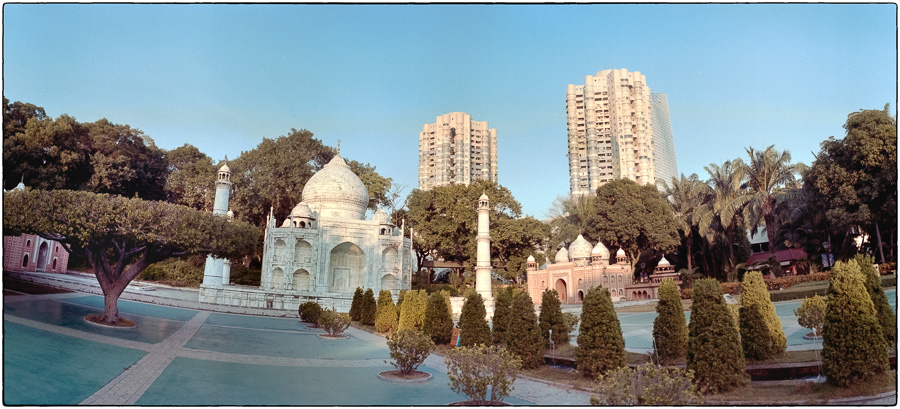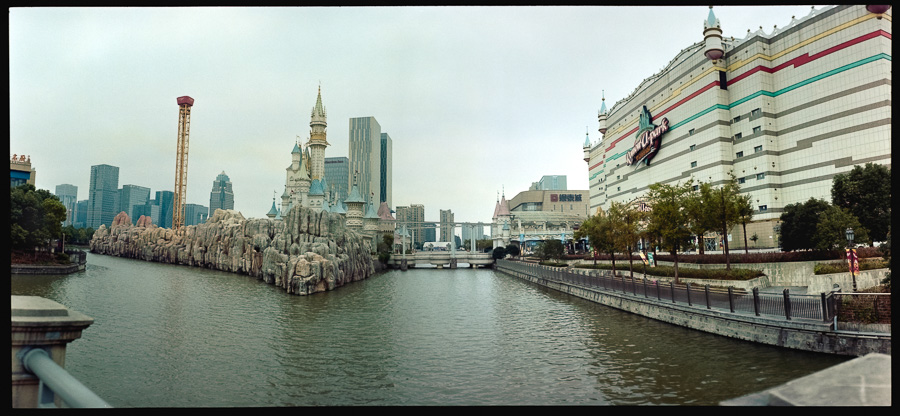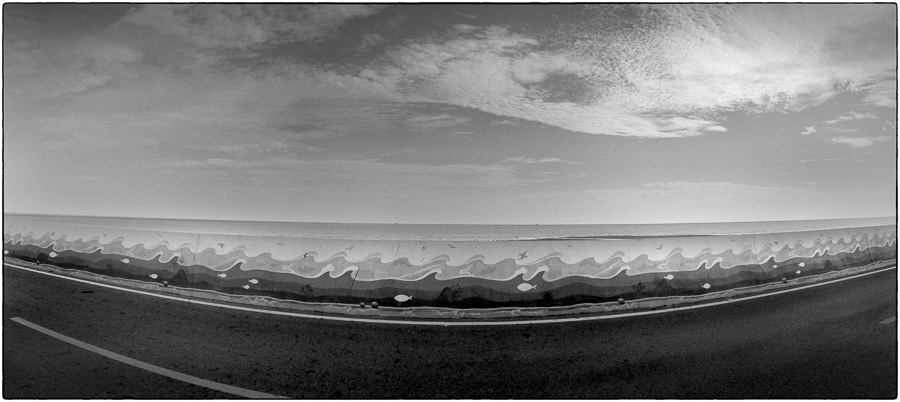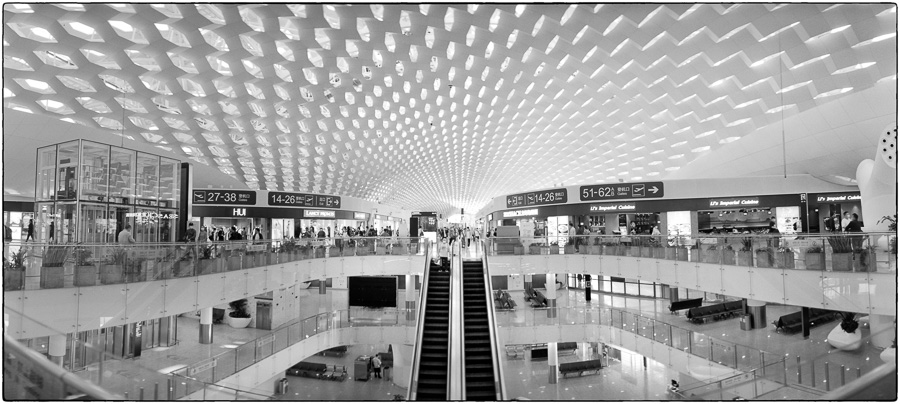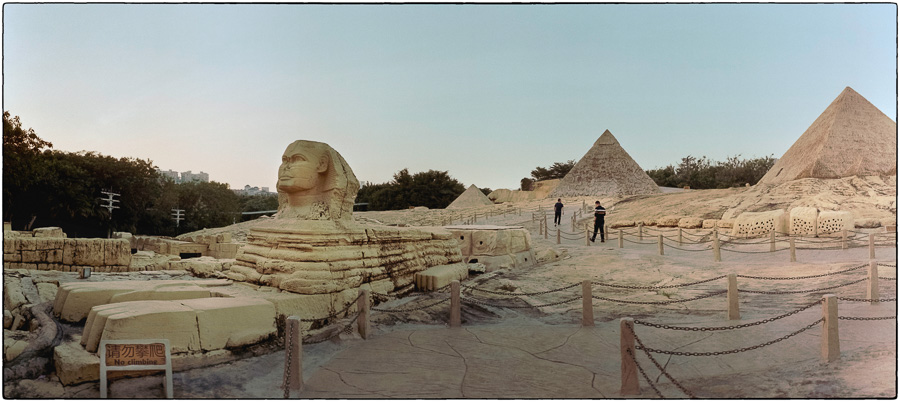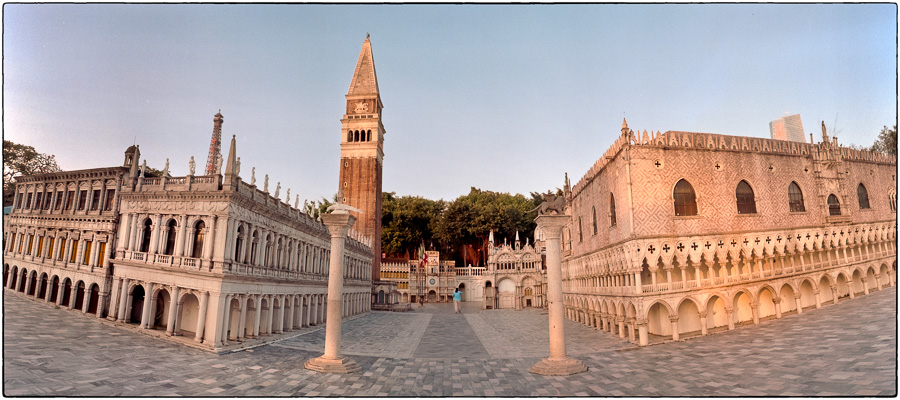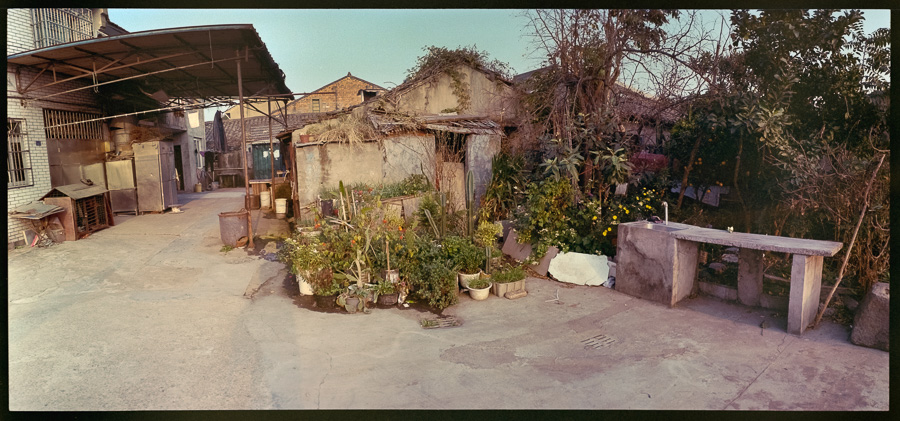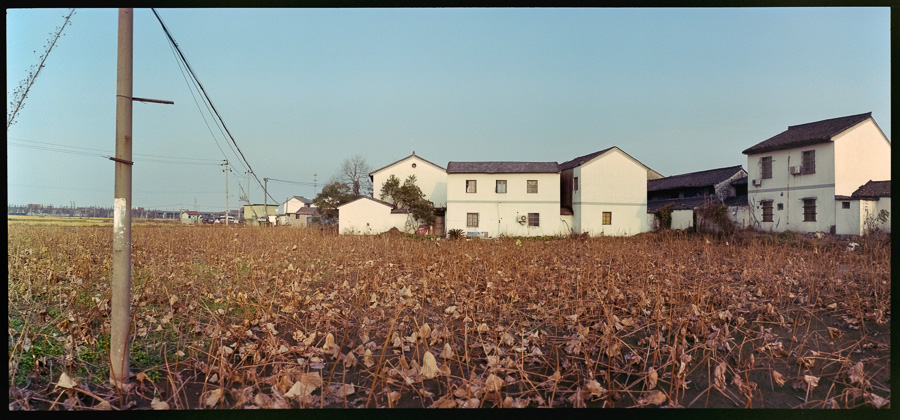吉姆 JIM HOFMAN | Photography Faces & places in China
Analog | Vintage Panflex Camera
The Shanghai Camera Mall got more of my money. I was in the mood for something COMPLETELY different than my other analog cameras, so I started investigating panoramic cameras. I had bought Jeff Bridges’ book shortly before I left for China and enjoyed his pano photos using a vintage Widelux F8 camera. I’ve sworn-off 35mm film (negatives are too small and poor resolution) so I searched for a pano camera that uses 120 size film. In a dark corner of the camera mall I found a Panflex (now called Widepan) – NEW-in-box. This camera is almost 20 years old.
If you’ve never seen a vintage pano camera, the lens turret rotates around a curved film plane that distorts the image depending on how close you are to the subject. Wide landscapes escape this distortion, but I plan to lean-into the distortion and see what I can come up with.
For the camera nerds: The negative size is 5cm X 11cm and a 120 size roll of film yields 6 images. The grips on the sides of the camera prevent your fingers (and knuckles) from appearing on the edges of your photos. My camera is an early production model – before they changed the name to avoid legal problems with Panaflex. The viewfinder is removable so you can walk around and size-up compositions without holding up the heavy all-metal body. This thing is built like a tank. The focus is all-manual and the aperture is adjusted after cocking the shutter by rotating the turret. There are only 3 shutter speeds, and I think the slowest 1/2 second setting is buggered on my camera. I’ve been using the 1/60 second for all of my shots. The camera is all mechanical and does not require a battery – but there is a battery to power a small LED light to assist in viewing the settings on the lens which is buried inside the turret. There are plenty of idiosyncrasies with this camera, but it only took me one roll of film to figure them out.
The photos below are from Ningbo, Shenzhen and Jiangsu province.

